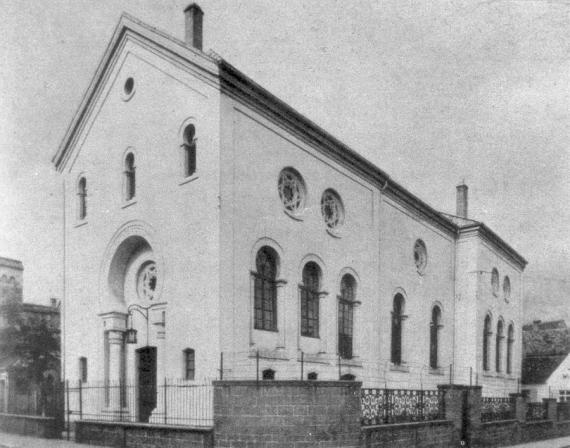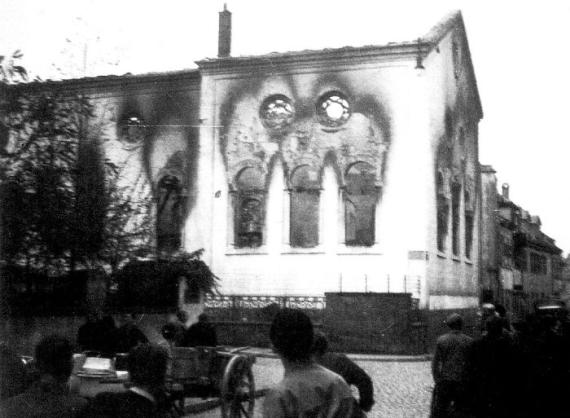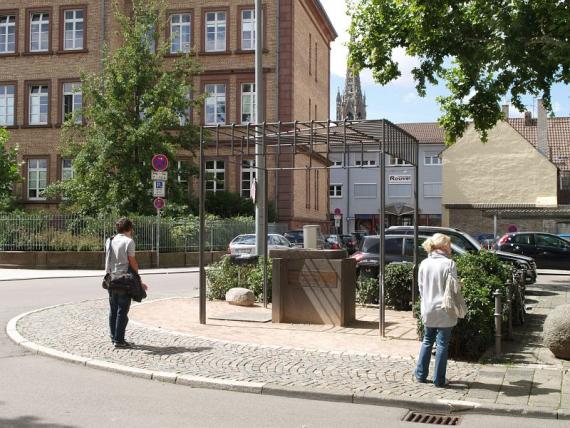Heydenreichstraße
Heydenreichstraße / Ecke Hellergasse
67346 Speyer
Germany
In the second half of the 17th century there was probably a prayer room in one of the Jewish residential houses. However, there is no documentary evidence. An old synagogue around 1700 could have been established in a building in the Webergasse. Also for this no written proofs are present.
At least since 1811, a prayer room was established in the house of the community leader Simon Adler. However, the room is said to have resembled "more a storehouse for hanging tobacco than a synagogue". After services in private prayer rooms were no longer permitted by the Bavarian government in 1816, this prayer room was abandoned.
After 1816, the Jewish community made several efforts to establish or build a synagogue. In 1819, a plan for the construction of a synagogue, which had been submitted to the royal district commissioner's office and which had been prepared by master mason Johann Friedrich Müller, was not approved due to the unsecured financing. In 1825 a house in today's Hellergasse was to be converted into a "prayer house". From the side of the authorities the condition was given to build a Jewish school house at the same time. But this exceeded the financial possibilities of the community.
In 1832, there were plans to rebuild a ruined church at the corner of Heydenreichstrasse and Stöckergasse (today's Hellergasse). The ruin was to be converted into a synagogue with a school and women's baths. The plans had been drawn by the civil building inspector August Voit. Initially, the plans were again rejected by the authorities. After Voit had revised the plans from a financial point of view, they were finally approved by the highest building authority, the Royal Ministry of the Interior in Munich, on May 10, 1836. In August 1836, the church ruins could be demolished. By June 1837 the schoolhouse with the women's bath had been built. Four months later, on November 24, 1837, the synagogue was consecrated. The construction costs amounted to 10,687 florins, financed by contributions of the congregation members, donations (500 florins from the Frankfurt banking house Rothschild) and by loans. Initially, services were held according to the traditional rite After the number of congregation members increased sharply since the 1840s, there were changes in the services of the Speyer Jewish community around 1850. In February 1850, the synagogue was equipped with an organ. In May 1862, the synagogue committee decided to extend the synagogue to the west. The municipal engineer Max von Siebert submitted the plans, which were revised by building inspector Tanera. In 1865, construction work could begin. Instead of the schoolhouse, a two-axis annex was added.
During the November pogrom of 1938, the synagogue was desecrated by SA and SS men. Ritual objects and furnishings as well as the library were looted, many things were stolen. Afterwards fire was set; the building was completely burnt out at that time. Already on November 11, 1938, the mayor got the demolition permit for the ruins of the fire.
In 1948/49, a green area with a children's playground was initially created on the site, later it was used as a parking lot. In 1955, a department store was built on the synagogue property. On November 9, 1978, a memorial plaque was initially placed on the wall of the department store. In 1992, a new memorial stone was unveiled, commemorating the annihilated Jewish community and its victims.

Alemannia Judaica

Alemannia Judaica

Add new comment